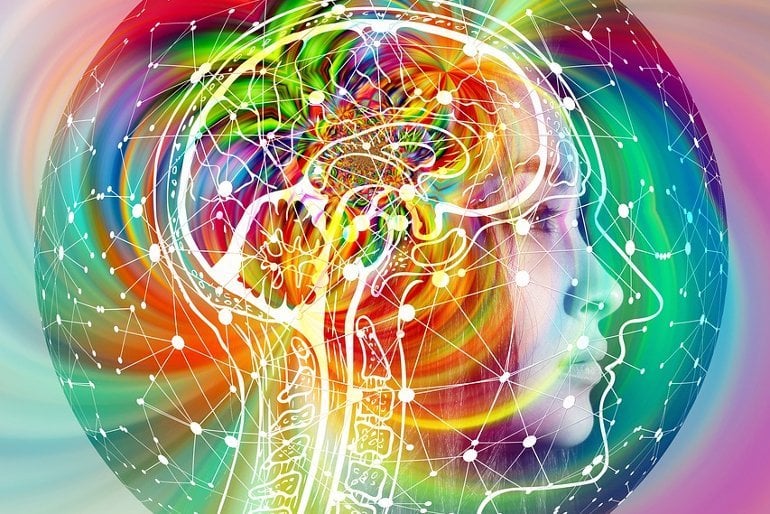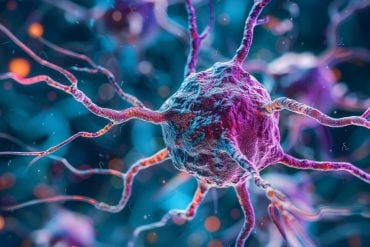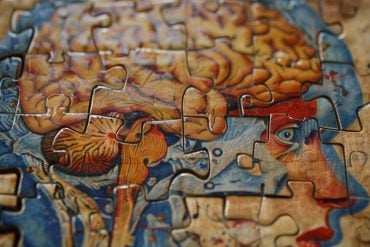Summary: Dissociation often occurs following trauma, and affects more women than men. A new study found different dissociative symptoms are uniquely associated with connections in areas of brain networks linked to cognition and emotional processing.
Source: McLean Hospital
Trauma can cause dissociative symptoms—such as having an out-of-body experience, or feeling emotionally numb—that may help an individual cope in the short term but can have negative impacts if the symptoms persist for a long period of time.
In a new study recently published in Neuropsychopharmacology, a team led by investigators at McLean Hospital, the largest psychiatric affiliate of Harvard Medical School and a member of Mass General Brigham, has identified regions within brain networks that communicate with each other when people experience different types of dissociative symptoms.
“Dissociation and severe dissociative disorders like dissociative identity disorder or ‘DID’ remain at best underappreciated and, at worst, frequently go undiagnosed or misdiagnosed,” said co-lead author Lauren A.M. Lebois, Ph.D., director of the Dissociative Disorders and Trauma Research Program.
“The cost of this stigmatization and misdiagnosis is high—it has prevented people from accessing appropriate and effective treatment, caused prolonged suffering, and stunted research on dissociation. In addition, given that DID disproportionately affects women, gender disparity is an important issue in this context.”
Lebois and her colleagues’ study included 91 women with and without histories of childhood trauma, current post-traumatic stress disorder, and with varied levels of dissociative symptoms. Participants completed a functional magnetic resonance imaging scan so that investigators could gain insight into their brain activity.

“The novel methods we used to study brain connectivity are critical for understanding the role these network disturbances play in dissociative disorders,” said co-senior author Lisa D. Nickerson, Ph.D., director of the Applied Neuroimaging Statistics Lab at McLean Hospital.
The scientists found that different dissociative symptoms were uniquely associated with connections of areas in brain networks that are responsible for cognition and emotion processes. “We found that dissociation common to post-traumatic stress disorder and dissociation central to DID are each linked to unique brain signatures,” said Lebois.
The team hopes that a better understanding of the brain correlates of dissociation will help to rectify historical misunderstanding about dissociation and DID, destigmatize these experiences, and contribute to reducing gender-related health disparities.
“We also hope it will increase awareness of dissociative symptoms—and that, ultimately, clinicians will be more likely to assess for and consider these symptoms, and to connect patients with timely and appropriate treatment,” said co–senior author Milissa Kaufman, MD, Ph.D., director of the Dissociative Disorders and Trauma Research Program.
It is important to note the unique brain signatures of different dissociative symptoms may point to new therapies, the study authors said. “In the future, we could target brain activity related to dissociation as a treatment in and of itself,” said co-author Kerry J. Ressler, MD, Ph.D., chief scientific officer for McLean.
About this dissociation research news
Author: Press Office
Source: McLean University
Contact: Press Office – McLean University
Image: The image is in the public domain
Original Research: Closed access.
“Deconstructing dissociation: a triple network model of trauma-related dissociation and its subtypes” by Lauren A. M. Lebois et al. Neuropsychopharmacology
Abstract
Deconstructing dissociation: a triple network model of trauma-related dissociation and its subtypes
Trauma-related pathological dissociation is characterized by disruptions in one’s sense of self, perceptual, and affective experience. Dissociation and its trauma-related antecedents disproportionately impact women.
However, despite the gender-related prevalence and high individual and societal costs, dissociation remains widely underappreciated in clinical practice. Moreover, dissociation lacks a synthesized neurobiological model across its subtypes.
Leveraging the Triple Network Model of psychopathology, we sought to parse heterogeneity in dissociative experience by examining functional connectivity of three core neurocognitive networks as related to: (1) the dimensional dissociation subtypes of depersonalization/derealization and partially-dissociated intrusions; and, (2) the diagnostic category of dissociative identity disorder (DID).
Participants were 91 women with and without: a history of childhood trauma, current posttraumatic stress disorder (PTSD), and varied levels of dissociation. Participants provided clinical data about dissociation, PTSD symptoms, childhood maltreatment history, and completed a resting-state functional magnetic resonance imaging scan.
We used a novel statistical approach to assess both overlapping and unique contributions of dissociation subtypes.
Covarying for age, childhood maltreatment and PTSD severity, we found dissociation was linked to hyperconnectivity within central executive (CEN), default (DN), and salience networks (SN), and decreased connectivity of CEN and SN with other areas.
Moreover, we isolated unique connectivity markers associated with depersonalization/derealization in CEN and DN, to partially-dissociated intrusions in CEN, and to DID in CEN.
This suggests dissociation subtypes have robust functional connectivity signatures that may serve as targets for PTSD/DID treatment engagement. Our findings underscore dissociation assessment as crucial in clinical care, in particular, to reduce gender-related health disparities.







